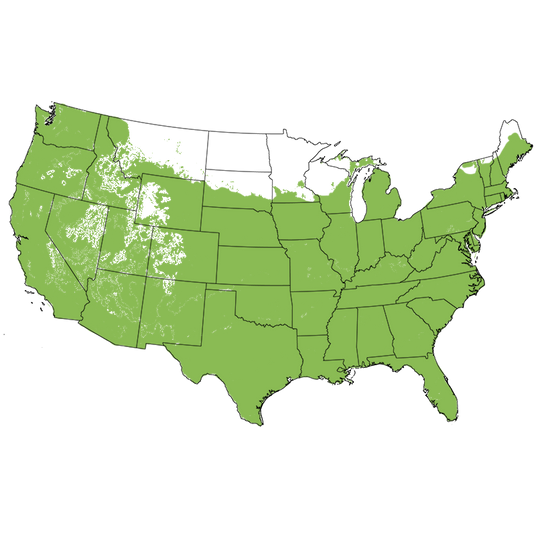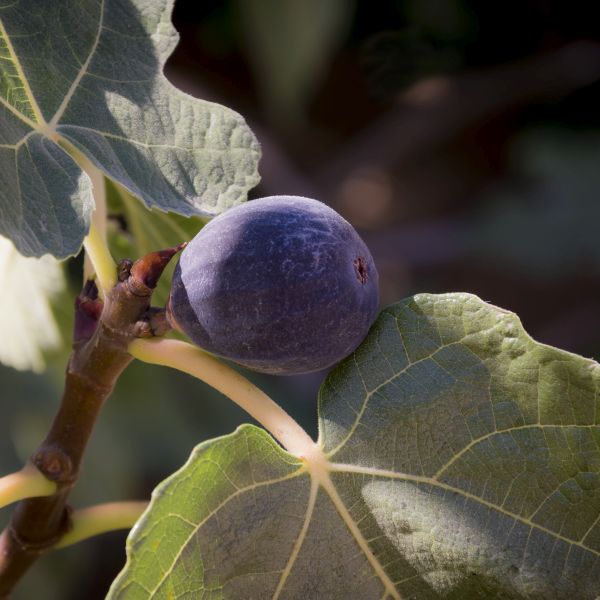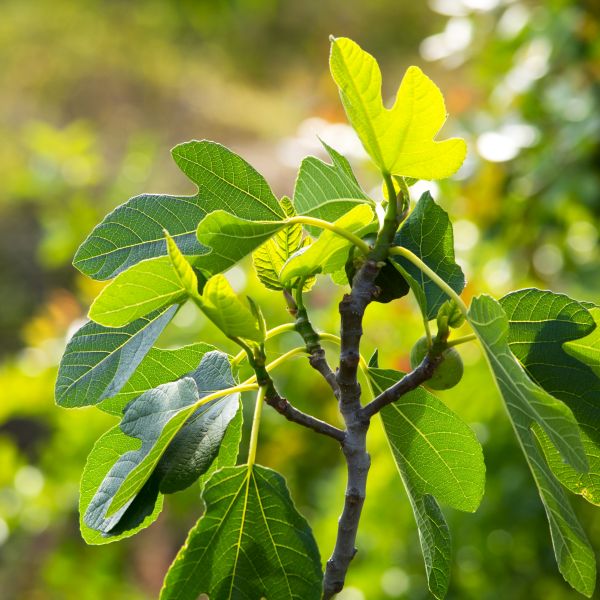Chicago Hardy Fig Tree
Ficus carica 'Chicago Hardy'
Plant Sentry™
Plant Sentry™

Plant Sentry™ Protected
Your order is protected by our compliance system that:
- Prevents restricted plants from shipping to your state
- Ensures plants meet your state's agricultural requirements
- Protects gardens from invasive pests and diseases
Delivery and Shipping
Delivery and Shipping
Delivery and Shipping
Fast, Safe Plant Delivery
Ships in 3-4 business days • Tracking provided • Weather protected
| Under $50 | $9.99 |
| $50 - $99.99 | $14.99 |
| $100 - $149.99 | $16.99 |
| $150 - $198.99 | $24.99 |
| $199+ | FREE |
✓ Zone-specific timing • ✓ Professional packaging • ✓ Health guarantee
Understanding Plant Options
Nature Hills offers plants in two main formats:
- Container Plants: Grown in pots with soil, sized by container volume and plant age
- Bare Root Plants: Dormant plants without soil, sized by height measurements
Container Plant Sizes
Container sizes indicate plant age and growing capacity rather than liquid volume equivalents. Our containers follow industry-standard nursery "trade gallon" specifications, which differ from standard liquid gallon measurements.
Young Plants (6 months to 18 months old)
| Container Size | Actual Volume | Metric Equivalent |
|---|---|---|
| 2" x 2" x 3" | 0.18 - 0.21 dry quarts | 0.20 - 0.23 dry liters |
| 4" Container | 0.31 - 0.87 dry quarts | 0.35 - 0.96 dry liters |
| 4.5" Container | 0.65 dry quarts | 0.72 dry liters |
| 6" Container | 1.4 dry quarts | 1.59 dry liters |
| 1 Quart | 1 dry quart | 1.1 dry liters |
| 5.5" Container | 1.89 dry quarts | 2.08 dry liters |
Established Plants (18 months to 2.5 years old)
| Container Size | Actual Volume | Metric Equivalent |
|---|---|---|
| 2 Quart | 2 dry quarts | 2.2 dry liters |
| #1 Container | 2.26 - 3.73 dry quarts | 2.49 - 4.11 dry liters |
| 5" x 5" x 12" | 3.5 - 4.3 dry quarts | 3.85 - 4.74 dry liters |
Mature Plants (2-4 years old)
| Container Size | Actual Volume | Metric Equivalent |
|---|---|---|
| #2 Container | 1.19 - 1.76 dry gallons | 5.24 - 7.75 dry liters |
| #3 Container | 2.15 - 2.76 dry gallons | 8.14 - 12.16 dry liters |
Large Plants (3-5 years old)
| Container Size | Actual Volume | Metric Equivalent |
|---|---|---|
| #5 Container | 2.92 - 4.62 dry gallons | 12.86 - 20.35 dry liters |
| #6 Container | 5.25 - 6.01 dry gallons | 23.12 - 26.42 dry liters |
| #7 Container | 5.98 - 6.53 dry gallons | 26.34 - 28.76 dry liters |
Bare Root Plants
Bare root plants are sold by height from the root system to the top of the plant. Plants may exceed minimum height requirements.
Common Sizes:
- Trees: 1 foot, 2 feet, 3 feet, 4 feet, 5 feet, 6 feet
- Shrubs & Perennials: 1 foot, 18 inches, 2 feet
Important Notes
Container Volume Specifications
- Trade Gallon Standard: Our containers follow industry-standard "trade gallon" specifications established by the American National Standards Institute (ANSI Z60.1) for nursery stock
- Volume Variations: Actual soil volume may vary due to plant root systems and growing medium settlement
- Age Indicators: Container size primarily indicates plant age and maturity rather than liquid volume equivalents
Growing Conditions
- Plant size can vary based on variety and growing conditions
- Container size helps indicate plant maturity and establishment level
- Larger containers generally mean more established root systems and faster landscape establishment
Seasonal Availability
- Bare root plants are available seasonally when dormant
- Container plants are available throughout the growing season
- Specific varieties may have limited availability in certain sizes
Questions?
For questions about specific plant sizes or availability, please contact our plant experts who can help you choose the right size for your landscape needs.

Plant Sentry™ Protected
Your order is protected by our compliance system that:
- Prevents restricted plants from shipping to your state
- Ensures plants meet your state's agricultural requirements
- Protects gardens from invasive pests and diseases
Plant Profile & Growing Essentials
Cold hardy, Self-pollinating, Edible, Ornamental Berries/Fruit, Thornless, Heat Tolerant, Drought resistant, and Container Friendly
Specifications
Specifications
-
Botanical Name
-
Height
-
Width
-
Growing Zones
-
Sunlight
-
Growth RateModerate
-
Flower Color
-
Leaf Color
-
Pollinator Required
-
Bloom PeriodLate Spring
-
FragrantYes
-
Does Not Ship ToAK, HI, ID, MT, OR
Planting & Care Instructions
Planting & Care Instructions

Growing Zones 5-10
Once you take the step into Epicurean edible landscaping, there is no going back! Starting in late summer, you'll enjoy an abundant crop of tasty figs from the cold-hardiest Fig tree available on the market! The Chicago Hardy Fig tree (Ficus carica 'Chicago Hardy') is also absolutely gorgeous! This is a vigorous, rugged selection from the Chicago area, so it's nicknamed Bensonhurst Purple Fig. Even if you live further south, you'll love its abundant harvest...even after a tough winter.
Chicago Hardy Fig developed into an attractive upright shrub or small tree, with distinctively leathery, dark green three-fingered leaves. These leaves are gigantic - growing up to 10 inches long!
You may not notice the green flowers, but you will be thrilled to see a bumper crop of tiny figs appear. Over the season, Chicago Hardy Fig can produce up to 100 pints of super fresh, homegrown fruit!
It's not just a cold-hardy Fig that is easy to grow and maintain, the fruit is great tasting as well. It is for this reason that the Chicago Hardy has become one of the favorites of home gardeners around the country. Chicago Hardy Fig Trees are high-yielding and partially self-pollinating. You only need one for fruit...but you'll want more than that! More trees will simply give you higher yields! Go big and create a Fig tree collection!
People often say that this tree produces the most delicious, purple-skinned Figs. Growing your own figs is a total joy. Starting in early fall, you'll have plenty to enjoy fresh on a cheese plate, or grilled and chopped into salads with a little goat cheese to taste.
The fruit can be peeled, eaten fresh, cooked, canned, and dried. It's a snap to grow and delivers a consistent harvest year after year. Gain a nutritious fig harvest for potassium, Vitamins B and C, fiber and magnesium. Create your own delicious preserves and baked goods to share. Modern homesteaders are dehydrating, canning and freezing whole figs to extend their useful life for up to a year.
Figs typically ripen anywhere from August until the first frost in the fall, but you may even see deep purple fruit as early as July. There's no need to wait for them to produce as this easy-to-grow tree will usually bear medium-sized fruit for you and your family in its very first season.
This highly adaptable tree can survive Zone 6 and into Zone 5. But don't let the name fool you! Chicago Hardy Fig also is also a great choice for the hot climates of central California! With its small to closed eye, Chicago Hardy is a good choice to plant in Texas as well as all along the Southern Seaboard. Hardy throughout USDA growing zones 5 - 10, these are adaptable fruiting plants!
Planting and Application:
With their large, tropical-looking leaves, Fig trees are highly ornamental. Use them in a courtyard as a specimen shade tree. Chicago Hardy Fig is also a terrific choice to give as a gift. This choice represents the next step after Houseplants for many young gardeners. Foodie friends will certainly appreciate one or two for fresh ingredients and their special decorator look. Can you imagine a more appropriate Hostess Gift?
Watching your very own homegrown crop ripen on your balcony, patio, or planted in a long orchard row is such a satisfying experience. The lobed leaves give Northern gardens a wonderfully Mediterranean look. Just imagine how sophisticated a containerized pair or trio would look on your balcony or patio. This is one of the best to train as Espalier; a pruning technique that has been popular in Europe for generations.
Fig lovers are also gaining a successive harvest of fresh figs by choosing several different varieties in marginal regions. Add Brown Turkey and Celeste in a containerized collection. or protect the crown with wrapping or heavy straw mulch. Pot them up, and bring them into a dark, cool area inside to go dormant during the winter months.
They also make unforgettable landscape plants. Rely on their low branching and showy foliage to act as an effective privacy screen. Plant several in a beautiful row behind your patio seating. You won't have far to walk to harvest, and you'll be quite pleased with how it will spark conversation with curious guests.
Add them as a unique hedge along your property line. Allow them to spread to their mature size listed on the Plant Highlights, or keep them pruned for size control in a high-density planting. Summer pruning is key to this time-tested technique.
- Late Season Small to Closed Eye Figs
- Sweet, Mahogany Purple Fruit & Great-Tasting Pink Flesh
- Very Productive & Excellent Flavor
- The Hardiest Fig on the Market!
- Does Well in Large Containers & Attractive Single Trunk Landscape Tree
#ProPlantTips for Care:
Provide Fig trees with either full sun or partial shade as they require at least four hours of direct sunlight a day, with a preference for morning sun. This gives you the most fruit! Fig trees are easy-care and require well-drained soil, along with good air circulation around your trees.
Elevate them in raised beds, or keep them in containers if your soil stays soggy for a long time after rain. During planting, add Nature Hills Root Booster to support the feeder roots over their entire life. Take your time when planting Fig trees and handle their roots with care.
Supply a moderate amount of water on a consistent basis for your Chicago Hardy Figs, no matter if they are kept in containers or grown in the ground. Even moisture is especially important during fruit development to prevent splitting, although the tree itself does display some drought tolerance.
A 3-4 inch layer of mulch over their root systems, spread to three feet past the canopy in order to keep the roots moist and cool. Then pull it back away from the trunk by several inches for proper air circulation.
In some colder climates, the tree can freeze to the ground. Don't be alarmed when this happens, though, as it will come back in the spring as a relatively fast-growing plant. Chicago Hardy Fig has proven to be dependable in producing a crop in the same year, even after being frozen to the ground. Even after die-back, it will produce fruit that same growing season because the Chicago Hardy Fig fruits on new wood. This cycle does not affect its fruiting at all.
The size of this tree will vary with the climate where it is being grown. In warm climates, they grow larger. In-ground trees can be used as a marvelous backdrop along a fence line. In growing Zones 5 and 6, just cover it well, or bring your container into an unheated garage or shed to go dormant over the winter. When you bring it back outside, the show begins again!
(Pro tip: get a sturdy plant caddy with wheels on the bottom. Place your container on top of the caddy first, before you fill it with dirt and plant your fig. It will make your life a lot easier!)
This selection of Fig Tree is cold-hardy down to zones 5, 6, and 7 outdoors but will need some winter insulation/protection to survive. Some people do grow them in containers so they can be wintered in unheated garages, cool greenhouses, or areas where the plants remain dormant but will not get colder than about 20°F. These trees don’t do best being brought in as houseplants, and do need to go dormant for winter, but can be temporarily housed indoors during extreme weather.
- Can Be Grown in Cold Winter Zones With Protection
- Full Sun & Partial Shade
- Well-Drained Enriched Soil & Containers
- Moderate Moisture Needs
- Prune During Dormancy
- Low Chill - About 100 Hours
- Displays Deer and Pest Resistance
Order your Chicago Hardy Fig trees today! You'll love the expert care it's received. Get a big head start on fruit production when you order from the fruiting tree experts at Nature Hills. We have lavished expert care on these trees for years!
Go ahead and get excited when you track your order and see that sturdy box from Nature Hills delivered on your doorstep. Open it up and fall in love with your new fruit trees! Water them well and follow our planting tips for a long love affair with fresh figs.
Fig Tree FAQ
At what age do Chicago Hardy Fig Trees bear fruit?
Nature Hills ships Fig trees with mature root systems that are already 2-3 years of age and the typical Fig tree will begin producing fruit at 3-5 years in optimal conditions.
Where is the best place to plant a Chicago Hardy Fig tree?
Fig trees, like nearly all fruiting trees and shrubs, need enriched, well-drained soil in a full sun location to flower and fruit the best. However, Chicago Hardy Fig also handles partial/afternoon shade.
Are Fig Trees Self-Pollinating?
Fig Trees are partially self-fruitful but do best with a pollination partner. Chicago Hardy Fig is a closed eyed-type of Fig and should have another similar Fig Tree planted nearby to maximize pollination chances.
What Shipping Options Do You Offer?
NatureHills.com works closely with our growers and nursery professionals to ensure we ship when it is most appropriate for your area. Our goal is to deliver the hardiest plants by avoiding extreme high and low temperatures. Check out our shipping schedule for more information and to learn our wills and won'ts when it comes to shipping plants. Find your Fig Trees for sale here at NatureHills.com!
Chicago Hardy Fig Grown for Flavor and Adaptability
The name alone indicates that this variety is widely adapted. It's not just a cold hardy Fig














